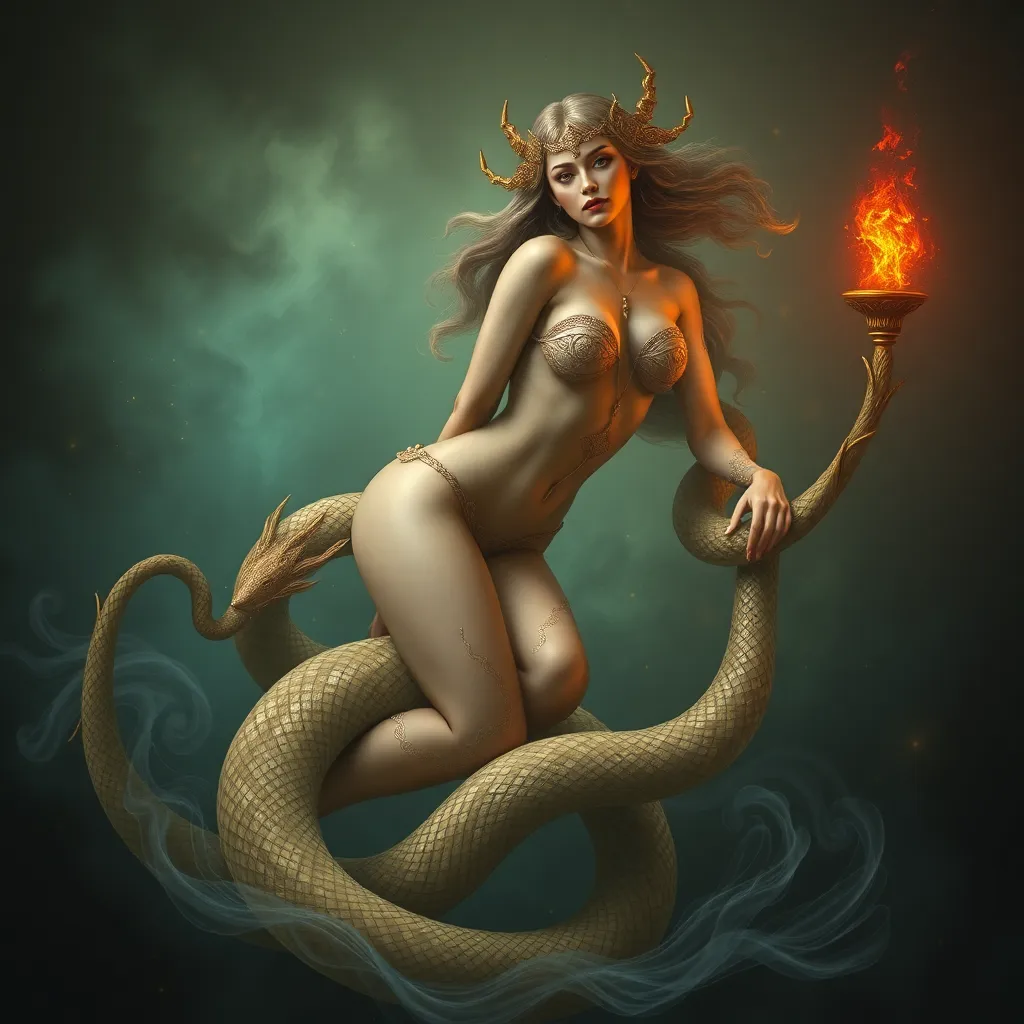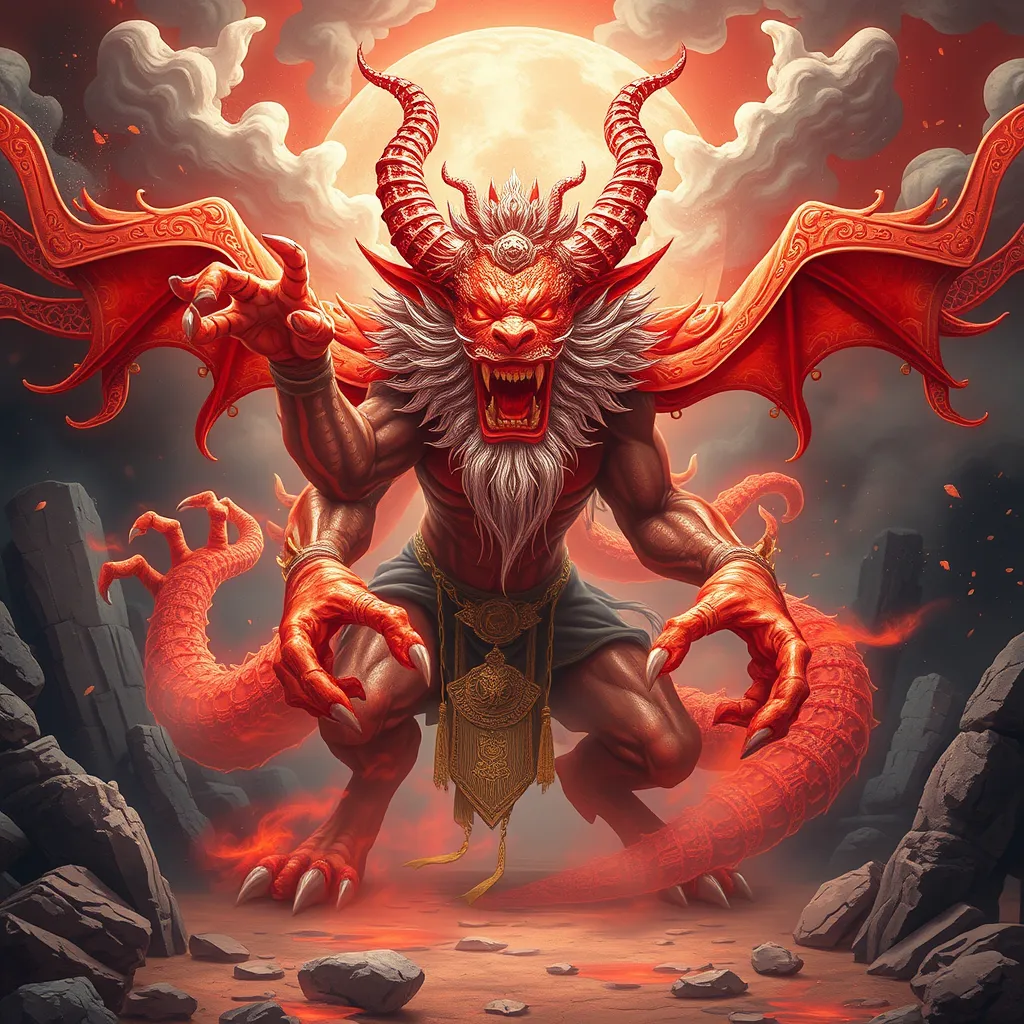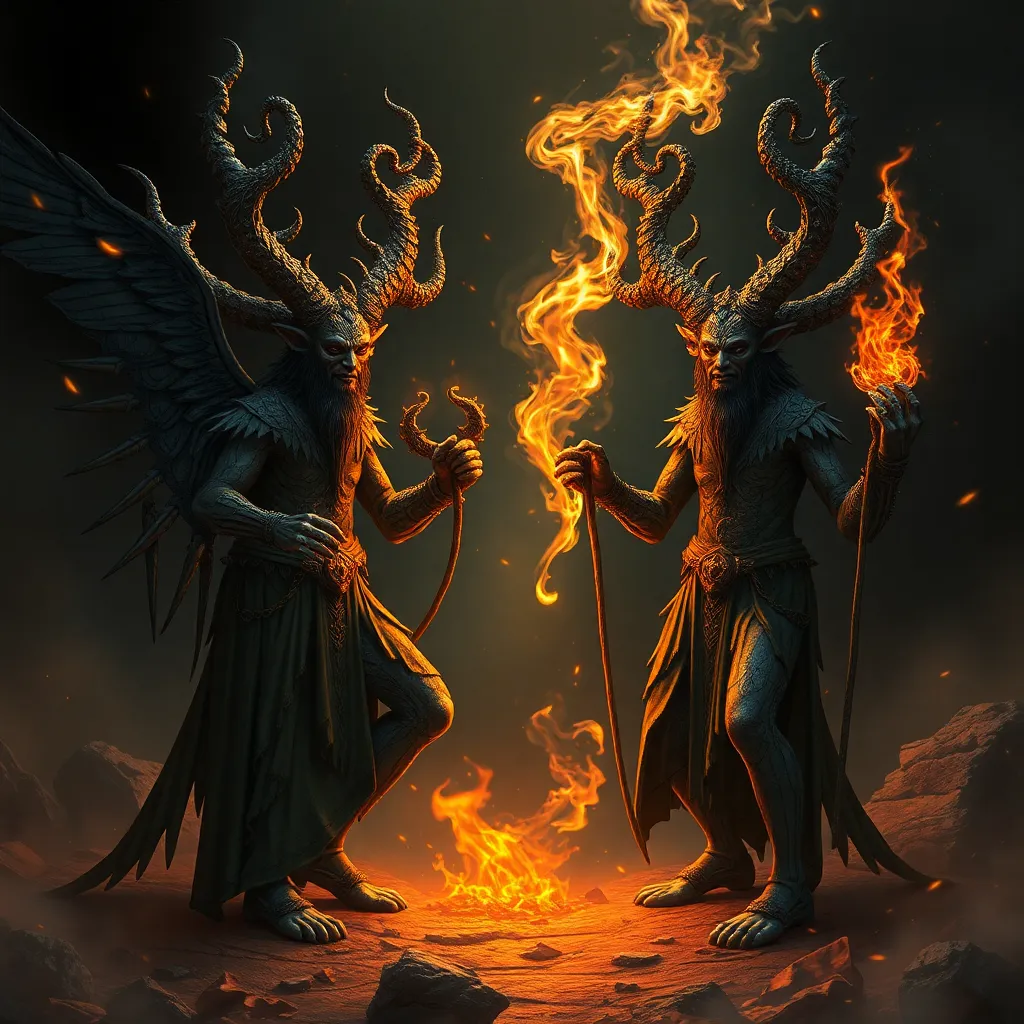Lamia and the Siren: Analyzing the Relationship Between Serpent Women and Enchanting Creatures
I. Introduction
The figures of Lamia and the Siren are iconic representations in ancient mythology, particularly in Greek lore. Lamia, often depicted as a serpent-woman, and the Sirens, known for their enchanting songs, serve as powerful symbols of allure and danger. This article aims to explore the connection between these two mythical entities, examining their historical origins, symbolism, and cultural significance.
By delving into the myths surrounding Lamia and the Sirens, we can uncover deeper insights into the themes of femininity, monstrosity, and the complex dynamics of power and vulnerability inherent in these narratives. Understanding these figures enhances our appreciation of their roles in both ancient and contemporary contexts.
II. Historical Origins of Lamia and Sirens
The origins of Lamia can be traced back to ancient Greece, where she was often portrayed as a nightmarish figure who preyed on children. According to myth, Lamia was once a beautiful queen who became a monster after losing her children to Hera’s jealousy. This transformation symbolizes the tragic intersection of love and loss, beauty and monstrosity.
On the other hand, the Sirens evolved from early depictions as bird-like creatures to their more recognized forms as beautiful women with enchanting voices. Their mythology is deeply rooted in the tales of sailors, who were irresistibly drawn to their songs, often leading to shipwrecks and doom.
In comparing their origins, both Lamia and the Sirens share themes of transformation and loss. They reflect the duality of beauty and horror, serving as warnings against the dangers of desire.
III. Symbolism of the Serpent Woman
The serpent is a powerful symbol across various cultures, often representing temptation, danger, and the unknown. In the case of Lamia, the serpent aspect highlights her role as a figure of seduction intertwined with menace. This duality makes Lamia an embodiment of femininity that is both alluring and terrifying.
- Temptation: Lamia’s beauty draws in her victims, yet her serpent form signals danger.
- Monstrosity: She represents the monstrous feminine, challenging traditional notions of womanhood.
- Ambiguity: Lamia’s character blurs the lines between victim and predator.
This complexity invites readers to reflect on the nature of femininity, exploring how societal perceptions shape our understanding of women as both nurturing and destructive forces.
IV. The Enchantment of the Sirens
In Greek mythology, the Sirens are known for their captivating songs that lure sailors to their demise. Their enchanting voices symbolize the irresistible allure of beauty and the peril that often accompanies it. The Sirens’ role in myth highlights the theme of seduction, which carries significant implications for the characters involved.
- Captivation: The Sirens’ songs represent the power of allure, drawing in those who hear them.
- Destruction: Their enchantment often leads to the destruction of the sailors, emphasizing the danger of succumbing to temptation.
- Psycho-emotional impact: The psychological effect of their songs reflects the complexities of desire and obsession.
The stories of the Sirens illustrate how enchantment can be both beautiful and lethal, reinforcing the idea that what is alluring can also be deeply harmful.
V. Themes of Transformation and Identity
Transformation is a central theme in the narratives of both Lamia and the Sirens. Lamia’s metamorphosis from a beautiful queen to a monstrous figure symbolizes the loss of innocence and the consequences of jealousy and vengeance. This transformation reflects broader themes of identity in mythology, questioning what it means to be a woman in a patriarchal society.
Similarly, the Sirens embody fluidity between beauty and danger. Their ability to shift from enchanting singers to deadly predators highlights the transient nature of identity and the societal pressures surrounding femininity.
Through these transformations, both Lamia and the Sirens challenge the traditional roles assigned to women, suggesting that identity is multifaceted and often influenced by external forces.
VI. Intersections of Power and Vulnerability
The dynamics of power and vulnerability are intricately woven into the stories of Lamia and the Sirens. Lamia’s narrative reflects the power struggle between her monstrous identity and her former life as a mother and queen. Her vulnerability is evident in her tragic backstory, evoking sympathy despite her horrific actions.
Similarly, the Sirens wield significant power through their enchanting abilities, yet they are also vulnerable to the whims of fate, often meeting their own demise when sailors resist their call. This duality creates a nuanced exploration of how power can be both empowering and limiting.
- Power dynamics: Both figures exert control over their victims, yet their own narratives reveal deep vulnerabilities.
- Victimhood: The tragic elements of their stories invite audiences to empathize with their struggles.
- Agency: The actions of Lamia and the Sirens challenge the notion of passive femininity, asserting their roles as active agents in their narratives.
VII. Cultural Adaptations and Interpretations
In contemporary literature and media, Lamia and the Sirens have been adapted in various forms, reflecting modern societal views on femininity and power. These adaptations often emphasize themes of empowerment and resilience, presenting these figures in a new light.
- Literature: Modern retellings of their stories often explore themes of identity and reclaiming power.
- Film and TV: Adaptations in visual media frequently portray Lamia and the Sirens as complex characters with depth and agency.
- Art: Artistic representations highlight their beauty while acknowledging their dangerous allure.
These contemporary interpretations underscore the relevance of Lamia and the Sirens in today’s cultural discourse, inviting discussions on gender and power dynamics.
VIII. Conclusion
In conclusion, the relationship between Lamia and the Sirens illustrates the complex interplay of femininity, power, and monstrosity in mythology. Both figures serve as cautionary tales, reflecting societal fears and desires surrounding women and their roles in narratives.
By analyzing these captivating characters, we gain insights into the broader themes of identity and transformation that resonate throughout mythological storytelling. Their significance extends beyond ancient tales, inviting contemporary audiences to reflect on the ongoing implications of gender and power dynamics in society.
Ultimately, Lamia and the Sirens remind us of the dual nature of allure and danger, urging us to consider the complexities of our own narratives and identities in a world that continues to grapple with these timeless themes.



